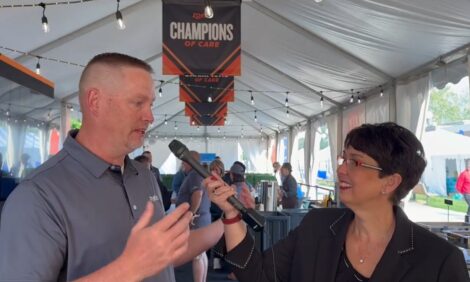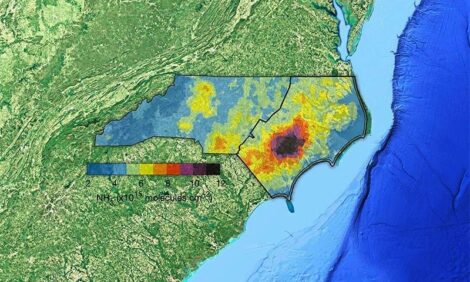



Boosting Productivity of a Sow Herd
By Steve Newing and published by PIC - The author, Steve Newing, is a herd manager on a 650 sow herd indoor breeding unit, New House Farm in Oxfordshire, owned by Mr T Blanchard. It was formerly a PIC nucleus farm. Finished pigs are marketed through Thames Valley Cambac into Tulip at Westerleigh.Stockmanship
High achieving farms will have high standards of stockmanship, as the stockman is crucial for good results. Our unit works closely as a flexible team with everyone helping where needed and attention to detail is high.
Herd management
We use our own gilts for replacement which are PIC Camboroughs [GP 1020(LW) female x GP 1010(LR) male]. We have a herd of 70 GP 1020 females running with the main herd of Camboroughs and these produce our replacement gilts. Gilts are selected at 150 days (100kgs) and come into the sow herd between 190-200 days.
 |
Heat Detection
I think using AI is the most important task on a unit. Only selected members of staff will heat-detect, whereas most staff will do AI. Heat detection is done once a day by walking a vasectomised boar through the sow and gilt pens. It is the first job done in the service house, even before feeding. The purpose of walking the boar through the pens is purely to stimulate the sows for the stockman to then identify and record for AI.
All sows and gilts that stand to back pressure will be selected for AI, as well as some sows with riding marks on their backs (even if they don’t stand to back pressure). Making an accurate selection is one of the skills of the job. It is not black and white. You have to be flexible in your assessment of each sow, observing finer details which will ensure you make an accurate decision.
Semen
We have a standing order with PIC and have a semen delivery twice a week. We are able to change our order to suit our circumstances, which is a valuable service. One of the main advantages for using AI instead of natural service, is that we don’t have to consider the boar/sow size ratio. Additionally, AI enables us to run a small GP 1020 herd. It would be extremely difficult to use natural service because of the small numbers of sows and boars involved. The PIC AI service is well-run and very professional. We would struggle to achieve these figures without using AI.
Data
Agrosoft WinPig is used to produce our reports and I closely inspect these each week. The input data is very accurate, which is essential. The reports enable me to make any necessary changes to improve the herd performance.
Cull sows
Cull sows are identified and prompt action is taken to remove them from the herd. Records are accurate and good enough to ensure that no sow gets a free ride!
Vaccination
We implement a rigorous vaccination programme. Vaccines are stored at the correct temperatures, administered at the right times and given in the correct dosages.
Treating the sow as an individual, not a machine
Ensuring that every sow is in peak physical and mental condition is of vital importance and attention to detail is paramount. Illness and lameness are identified and dealt with swiftly. My view is that the sows are the mainstay of the farm. They are producing the pigs and rearing them. They produce the income. If sows are happy and healthy then from our experience this is reflected in the performance figures. This extra vigilance fine-tunes performance.
Piglet mortality
To keep piglet mortality down to 5-6%, attention to detail has to be very high. We push the gilts quite hard at farrowing and they are currently weaning 28.9 pigs/gilt/year. Previous farrowing records are analysed on all sows and we keep as many pigs on the sow as possible. Piglets that are regressing are fostered into new litters, and shunt fosters are regular occurrences. It is not uncommon to come into work in the morning and find 10 new litters, the smallest of which has 14 piglets!

December 2006








